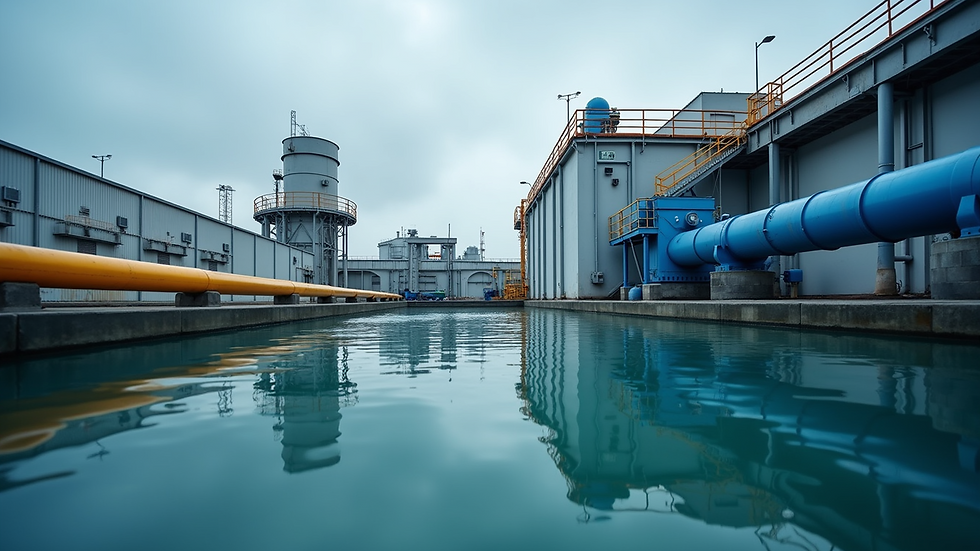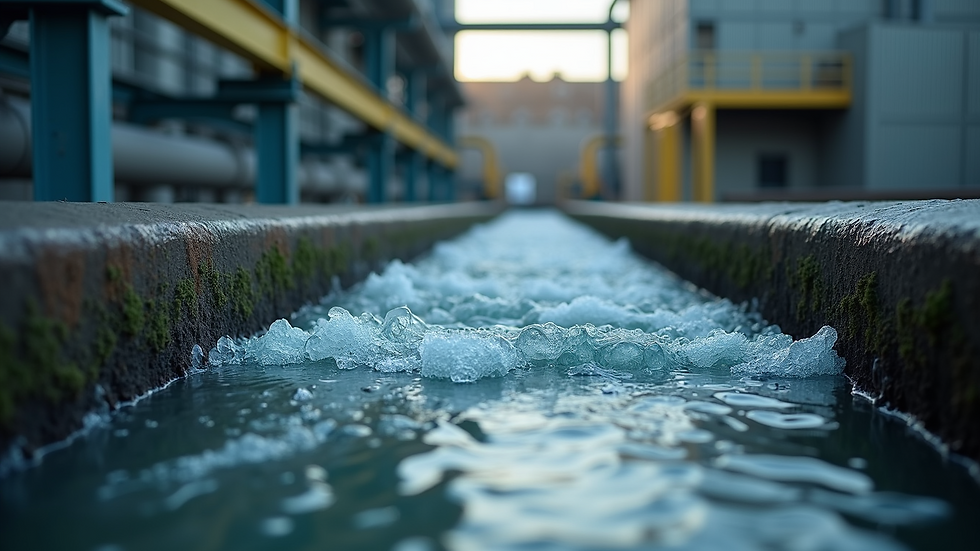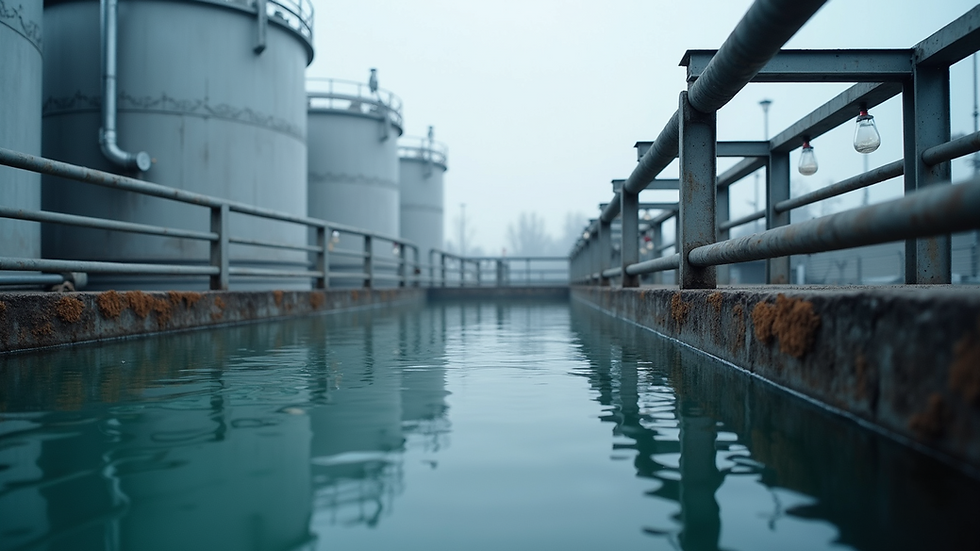Understanding Industrial Wastewater Solutions in India
- palwinder kaur
- Sep 16
- 4 min read
India's rapid industrial growth has brought significant economic benefits but also environmental challenges. One of the most pressing issues is managing the wastewater generated by various industries. Effective industrial water treatment is essential to protect natural water bodies, comply with regulations, and promote sustainable development. This article explores the key aspects of industrial water treatment in India, offering practical insights and solutions.
The Importance of Industrial Water Treatment in India
Industrial water treatment plays a crucial role in reducing pollution and conserving water resources. Industries such as textiles, chemicals, pharmaceuticals, and food processing generate large volumes of wastewater containing harmful contaminants. Without proper treatment, this wastewater can pollute rivers, lakes, and groundwater, affecting ecosystems and public health.
In India, the government has implemented strict regulations to control industrial pollution. The Central Pollution Control Board (CPCB) mandates industries to treat their wastewater before discharge. Compliance not only avoids legal penalties but also enhances corporate social responsibility and community relations.
Key benefits of industrial water treatment include:
Protecting aquatic life and biodiversity
Preventing soil contamination
Reducing health risks for nearby communities
Enabling water reuse and conservation
Supporting sustainable industrial growth

Common Industrial Water Treatment Technologies
Several technologies are used to treat industrial wastewater, depending on the type and level of contamination. Understanding these methods helps industries select the most effective and cost-efficient solutions.
Physical Treatment
Physical processes remove suspended solids and floating materials through:
Sedimentation tanks
Screening and filtration
Flotation techniques
These methods are usually the first step in treatment, preparing wastewater for further processing.
Chemical Treatment
Chemical treatment involves adding reagents to neutralize or precipitate pollutants. Common techniques include:
Coagulation and flocculation to remove suspended particles
pH adjustment to neutralize acidic or alkaline wastewater
Oxidation and reduction reactions to break down harmful substances
Biological Treatment
Biological methods use microorganisms to degrade organic pollutants. These include:
Aerobic treatment (using oxygen) such as activated sludge processes
Anaerobic treatment (without oxygen) for high-strength organic waste
Biological treatment is effective for reducing biochemical oxygen demand (BOD) and chemical oxygen demand (COD).
Advanced Treatment
For industries requiring high-quality effluent, advanced treatments are applied:
Membrane filtration (ultrafiltration, reverse osmosis)
Adsorption using activated carbon
Ion exchange for removing heavy metals
These technologies ensure treated water meets stringent discharge standards or can be reused.
What are the different types of industrial wastewater?
Industrial wastewater varies widely depending on the industry and processes involved. Understanding these types helps in designing appropriate treatment systems.
Textile Industry Wastewater
Textile wastewater contains dyes, chemicals, and high levels of suspended solids. It is often alkaline and requires extensive treatment to remove color and toxic substances.
Chemical Industry Wastewater
This wastewater may include acids, alkalis, solvents, and heavy metals. Treatment focuses on neutralization, precipitation, and advanced oxidation.
Food Processing Wastewater
Rich in organic matter, fats, and oils, this wastewater is biodegradable but can cause high BOD and COD levels. Biological treatment is commonly used.
Pharmaceutical Industry Wastewater
Contains complex organic compounds and sometimes hazardous substances. Treatment involves a combination of chemical and biological methods.
Metal Processing Wastewater
Contains heavy metals like lead, chromium, and cadmium. Treatment requires precipitation, filtration, and sometimes ion exchange.

Challenges in Industrial Wastewater Management in India
Despite advances in technology, several challenges hinder effective wastewater treatment in India:
High treatment costs: Many small and medium enterprises struggle to invest in advanced treatment systems.
Lack of awareness: Some industries underestimate the environmental impact of untreated wastewater.
Inadequate infrastructure: Limited availability of common effluent treatment plants (CETPs) in industrial clusters.
Regulatory enforcement: Inconsistent monitoring and enforcement of pollution control norms.
Water scarcity: Increasing demand for water makes reuse and recycling essential but underutilized.
Addressing these challenges requires collaboration between industries, government agencies, and technology providers.
Practical Recommendations for Effective Industrial Water Treatment
Industries can adopt several strategies to improve wastewater management:
Conduct regular wastewater audits to identify pollution sources and optimize treatment processes.
Invest in modular and scalable treatment systems that can be upgraded as production grows.
Implement water reuse and recycling to reduce freshwater consumption and wastewater discharge.
Train staff and raise awareness about environmental compliance and best practices.
Collaborate with CETPs where available to share treatment infrastructure and reduce costs.
Monitor effluent quality continuously using online sensors and automated reporting.
Explore government subsidies and incentives for adopting green technologies.
By following these steps, industries can achieve compliance, reduce environmental impact, and improve operational efficiency.

Moving Towards Sustainable Industrial Water Management
Sustainable industrial water management is vital for India's environmental and economic future. Innovations such as zero liquid discharge (ZLD) systems, green chemistry, and digital monitoring are transforming wastewater treatment.
Industries must prioritize sustainability by:
Designing processes that minimize water use and waste generation
Investing in research and development for cleaner technologies
Engaging stakeholders in environmental stewardship
The future of industrial water treatment in India depends on proactive measures, technological adoption, and regulatory support. Together, these efforts can ensure cleaner water, healthier communities, and a thriving industrial sector.
For more detailed information on industrial wastewater solutions and technologies, exploring specialized providers can offer tailored support for your industry’s needs.



Comments